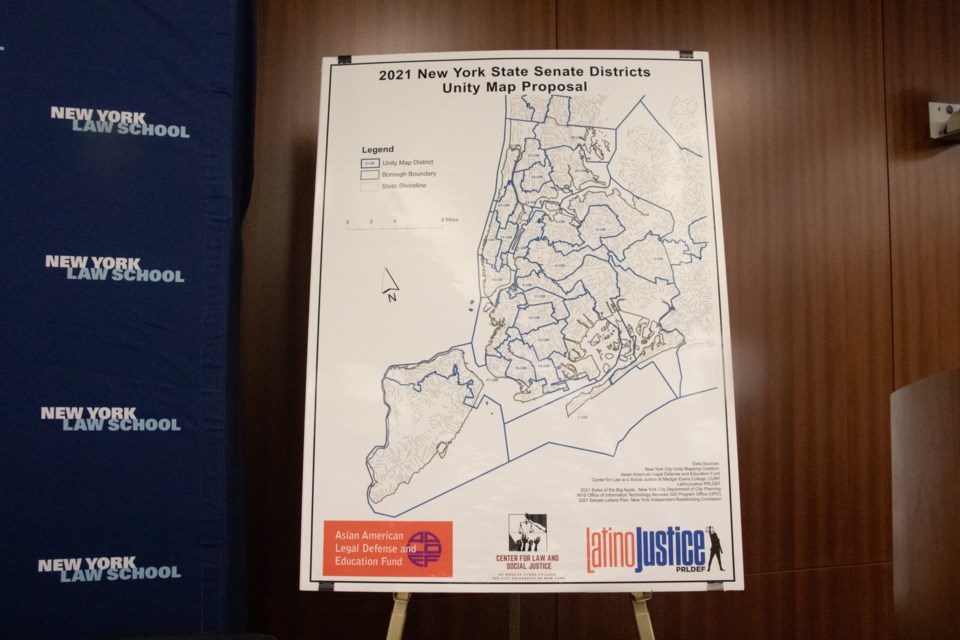This article is the first in a two-part series looking into redistricting in New York City. First, we look into the history of redistricting and why public input is so important. The next installment will examine the Unity Map, proposed by a coalition of voting rights advocacy organizations representing people of color in NYC.
States legislatures across the nation are in a contentious battle over redrawing electoral district maps, a process known as redistricting.
The word is thrown around a lot, most often in politically charged settings â" so why is this so important? That's because redistricting can alter political power and thus shape policies that impact peopleâs lives for a decade.
Typically, Republican and Democratic lawmakers use the process to carve out districts that enable their party to win elections.
New Yorkâs efforts to create a bipartisan redistricting map got off to a shaky start. In September, the Democrats and Republicans on the stateâs Independent Redistricting Commission failed to agree on a plan, The Associated Press reported.
Instead of a single redistricting map, they produced two competing proposals â"one drawn by Democratic members and the other by Republicans â" that would redraw Assembly, Senate, and Congressional lines across the state.
The commission has invited residents to send feedback about the proposed plans to its Public Input page.
Brooklyn residents will have an opportunity to weigh in on how much those maps increase or diminish their political power at an in-person hearing, scheduled for 3:00pm on Nov. 16 at Medgar Evers College in Crown Heights.
Redistricting basics
Redistricting is a process to redraw electoral districts for the U.S. House of Representatives and state legislatures. It occurs every 10 years following the U.S. Census Bureauâs release of new populations data.
Consequently, some states lose or gain seats in Congress, while others retain the same number based on their updated population figures. That reshuffling is known as reapportionment.
Based on data from the 2020 census, New York lost one seat in the U.S. House of Representatives.
The U.S. Constitution grants state legislatures the power to redraw congressional and state legislative lines, according to the National Conference of State Legislatures. Each state has its own process. In New York, the Independent Redistricting Commission was empowered to propose a new map and submit it to state lawmakers by Jan. 1, 2022.
If Albany rejects the first plan or Gov. Kathy Hochul vetoes it, the commission must submit a second plan to lawmakers no later than Feb. 28, 2022, according to NCSL. If the legislature rejects the first and second plans, there is no deadline for the legislature itself to act.
Ideally, the redrawn maps have roughly the same number of residents to ensure equal representation and donât discriminate against residents based on their race or ethnicity.
But that doesnât always happen.
Politics and bias in redistricting
Often, the party in power makes every effort to create redistricting maps that favor their electoral success. In some cases, that could involve limiting the voting power for people of color.
In Texas, where Republicans control the state legislature, multiple lawsuits were filed recently against the stateâs redistricting map. Texas Democrats and several voting rights advocacy groups alleged that the map discriminates against people of color.
âRedistricting is often encumbered in practices that tactically cancel out the collective voting strength of marginalized communities,â said Lourdes Rosado, president of LatinoJustice PRLDEF.
The organization is part of the Unity Map Coalition that is promoting a redistricting map that reflects the population growth among communities of color in New York City that is also fair.
Sections 2 and 5 of the Voting Rights Act prohibit redistricting plans that dilute minority voting rights, according to the American Civil Liberties Union. Vote dilution refers to the use of redistricting maps and other voting practices that minimize or cancel the voting strength of racial and other minorities.
There are several tactics involved, such as cracking, in which the lines are drawn to fragment areas densely populated with people of color.
Another scheme is often referred to as district packing. This happens when maps are drawn to cram a demographic group of voters into one district to limit their political strength.
âNew Yorkers need and deserve a fair and equitable redistricting process that provides Black, Asian, Latino, and other vulnerable communities with their rightful political power for the next decade,â Lurie Daniel-Favors, executive director of the Center for Law and Social Justice at Medgar Evers College, stated.




